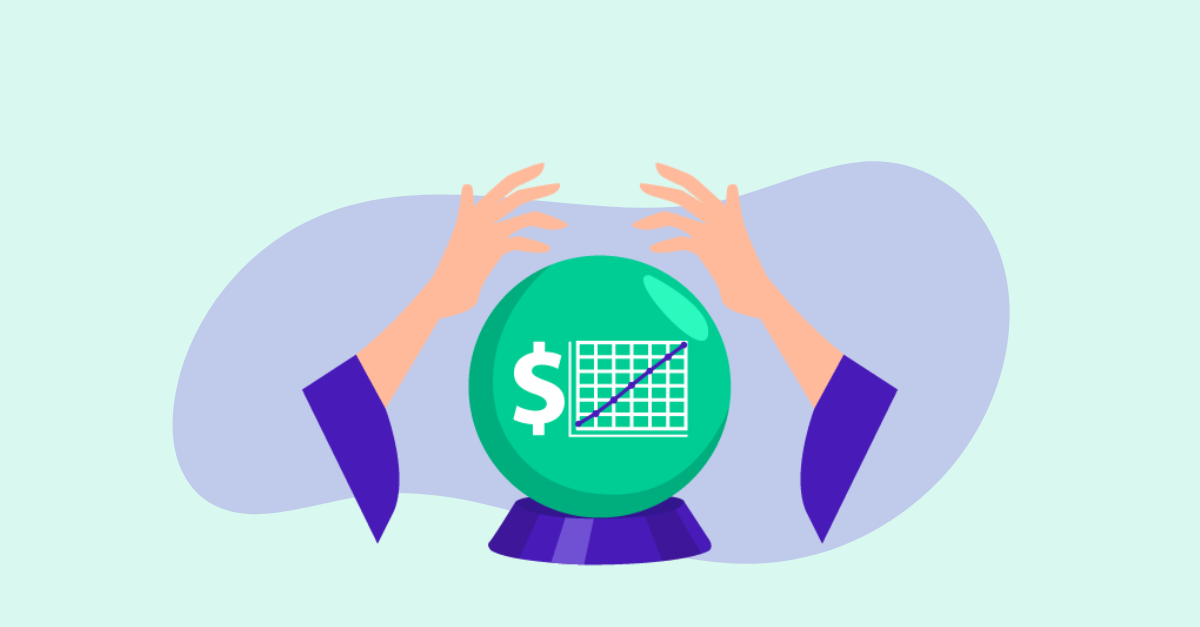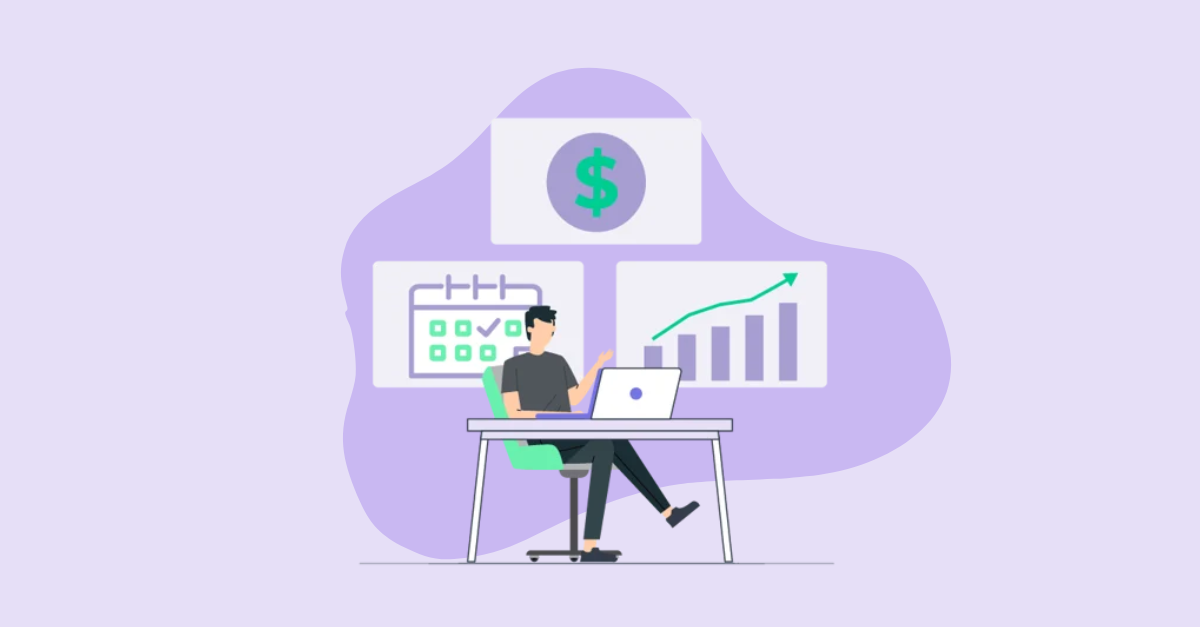Enhancing predictive analytics: The integration of forecasting tools with SaaS platforms
Accurate forecasts are the holy grail of business planning. The ability to reliably predict future outcomes allows companies to strategize more...
8 min read
 Evan Diaz de Arce
February 17, 2024
Evan Diaz de Arce
February 17, 2024
Discovering the power of a time series forecasting model is like unlocking a treasure chest for your business. You can instantly start forecasting future trends in revenue, expenses, and profitability based on your existing historical data. It's a game changer for any founder - whether this is your first venture or you're a serial entrepreneur.
Harnessing time series forecasting is crucial, particularly when you're navigating the unpredictable waters of the stock market or creating winning strategies for a startup or small business.
In this post, we'll unravel the intricacies of forecasting models, ranging from traditional ARIMA techniques to advanced neural network applications. You'll get the lowdown on how quality data sets the stage for accurate forecasts and why incorporating multiple variables can enhance your forecasts. By the end, you'll understand what these models are all about, and how savvy founders use them to sharpen their decision-making across the entire business.

Time series forecasting models are like a crystal ball into the future, letting you predict future values based on historical data. You could think of them as time travelers, whispering secrets about what's coming next - in stock prices or sales trends.
Because they're based on historical data, the accuracy of these forecasts gets better with every additional data point. And, as you would expect, they're generally more accurate on a shorter time horizon and less accurate on a longer one. It's like trying to hit a moving target; the closer it is, the easier it becomes to aim accurately.
To nail those predictions, quality data is non-negotiable. What is quality data? It's complete, timely, and accurate. Completeness ensures that no part of the story is missing. Timeliness prevents you from using old news to predict tomorrow's headlines - that'll never cut it. And accuracy ensures your forecast isn't based on faulty assumptions—garbage in equals garbage out.
Before you jump headfirst into technical data quality guidelines, just make sure your dataset ticks off all three boxes: completeness, timeliness, and accuracy. Those are the basic keys to a reliable series forecast.
In one corner we have classical models like ARIMA (Autoregressive Integrated Moving Average), leveraging seasonality and trend decomposition—a tried-and-true method where history often repeats itself. On the other side are neural networks; deep learning powerhouses crunching numbers at lightning speed to uncover patterns too complex for traditional methods. Which is better?
Unless you're forecasting something extremely intricate and nuanced, either technique will produce a reliable forecast. The magic lies in decomposing your data effectively, separating signal from noise, and focusing on what matters most. So while either technique will yield valuable results, the real secret is a trained eye that can recognize the underlying patterns driving change over time. That's where it pays to have an expert in your corner.
The Autoregressive Integrated Moving Average (ARIMA) model stands tall among classical time series modeling techniques. This method has served countless data scientists and statisticians well with its ability to decompose time series into seasonality and trend components. ARIMA's charm lies in its adaptability, effortlessly tackling different series data from fluctuating stock markets to seasonal temperature variations.
Delving into this classic method feels a bit like playing detective, piecing together clues from the past to uncover hidden trends and seasonal rhythms. However, we should mention that ARIMA has limitations. When you're dealing with extremely complex or nuanced datasets, sometimes the patterns are hard to find.
Newbies diving into the world of traditional forecasting might find it quite enlightening to explore SARIMAX examples via statsmodels or a similar tool, where they can practically witness how elements like seasonality and outside influences can shape future predictions.
Recently, the advent of neural networks has improved the ability to forecast in machine learning landscapes. Their strength lies in digesting massive amounts of input data and uncovering hidden correlations without much instruction on what patterns to look for.
Neural networks are particularly adept at dealing with non-linear relationships that are hard to expose through classical modeling techniques. Deep learning strategies are moving to the forefront for specialists tackling complex time-series datasets. This isn't particularly relevant or practical for most small businesses where traditional forecasting techniques produce a more reliable forecast with less expense and effort.
If you are eager to dive deeper into how these advanced algorithms are shaping up against traditional methods, Pyramid's auto-arima package offers an intriguing peek at automating some aspects of ARIMA modeling with machine learning. Diving into this adventure might unlock some insight and understanding you could use to increase the accuracy of your predictive forecasts for your business.
Dive into ARIMA for a solid start in classical forecasting. Read about neural networks to understand how machine learning is adding new capabilities to traditional forecasting with their ability to spot complex patterns. For a hands-on exercise, try SARIMAX examples and explore auto-arima packages.
Time series data analysis is like trying to understand a story where the plot changes over time. It's all about decoding trends, identifying seasonality, and filtering noise from historical data to predict what comes next.
Identifying seasonality in datasets is a bit like observing how nature operates in cycles—think of it as the ebb and flow in your data that repeats over a set period. This could be anything from higher ice cream sales during summer months to increased website traffic on Black Friday. Recognizing these patterns allows us to make more accurate forecasts by adjusting for predictable changes throughout the year.
Time series forecasting methods serve as a valuable instrument, enabling us to distinguish the rhythmic ebb and flow of seasonal influences from the myriad other elements in our dataset.
An upward trend signals growth or increases over time, similar to watching a plant grow taller day by day. In business terms, spotting an upward trend early can mean capitalizing on growing market demand or identifying promising investment opportunities before they become apparent to everyone else.
To nail down whether what you're seeing is truly an upward trajectory versus random fluctuations requires decomposing your time series using methods designed specifically for this purpose.
Last but not least, there's noise—the unpredictable chaos that seems determined just to confuse us. Noise represents irregularities in our data that don't fit into nice seasonal cycles or trends; noise can be outliers caused by unexpected events or errors in measurement.
Yet even here, decomposition techniques can help clarify what part of our dataset reflects real underlying patterns versus mere statistical ghosts just passing through.
Time series analysis involves several key components. Seasonality reveals repeating trends that coincide with the calendar. Trends reveal environmental changes that have impacted your business. Noise is made up of outliers and errors, and must be filtered out of your analysis.
Multivariate time series models are like the Swiss Army knife of forecasting. They don't just look at one variable in isolation but consider how multiple variables interact to improve the accuracy of a forecast. This approach is crucial because, as any founder can attest, most things in business aren't affected by just one factor.
For instance, think about predicting the price of a resource. It's not just previous prices that matter but also external variables such as market trends, economic indicators, and perhaps even social media sentiment. Taking into account these elements, complex predictive models offer a more detailed projection compared to simpler ones that only look at one variable.
This approach has proven its value, delivering markedly better precision over the traditional reliance on single factors. The enhancement in forecasting accuracy stems from the model's capacity to incorporate external elements that influence the variable under scrutiny.
Differencing techniques are the unsung heroes when we talk about making non-stationary data behave. Think of it as giving your unruly data a time-out, so it plays nice with your forecasting models. In taming this unpredictable data into a steady form, we're setting the stage for enhanced precision in our predictive models.
Why does this matter? Because without stationarity, you're trying to predict the future while standing on quicksand—it's shaky ground that doesn't give reliable feedback on how past values influence future ones. It’s something like trying to forecast weather patterns by looking at yesterday's clouds without considering the wind direction overnight.
To get started on transforming your own time series datasets into actionable insights, check out some of the differencing techniques discussed here.
Another secret weapon in multivariate time series forecasting is leveraging autocorrelation measures—basically understanding how current values relate back to past values can give you a leg up in your predictions. Autocorrelation can reveal both positive and negative indicators to help you quickly zero in on the changes that will impact your forecast the most.
To explore these concepts further, read about harnessing autocorrelation for better forecasts here. Remember, turning chaotic series into orderly lines not only makes your forecasts look good but also significantly boosts their accuracy—and who wouldn’t want that?
Multivariate time series models consider many variables at the same time to improve the accuracy of a forecast. Stationarity is a way to transform your dataset to make it more useful for analysis. Autocorrelation can quickly and automatically uncover repeating trends in your historical data.
Advanced forecasting methods have recently gotten a bit of a facelift with the addition of the robust power of machine learning. This change signifies not just an advancement in technology, but also a shift in approach. With dynamic forecasts, analysts can continually adjust their predictions as new information rolls in, making every iteration more accurate than the last.
Machine learning thrives on data—the more it gets, the smarter it becomes. This principle is crucial when dealing with time-sensitive or ever-changing scenarios like stock prices or market trends. A traditional model needs to be continuously updated as fresh data becomes available. Machine learning uses algorithms designed to process large datasets dynamically, so forecasts are refined as new inputs roll in.
This change has benefited sectors like commercial finance and large-scale retail that depend heavily on extremely large and complex datasets to make informed decisions.
If your data demands advanced capabilities like these, start exploring tools like Pyramid - auto-arima, which can simplify the process by automating much of the heavy lifting involved in identifying optimal parameters.
Gone are the days when forecasting was as simple as looking at yesterday's data and taking your best guess. The art of forecasting has evolved to break down every component of every metric, applying different assumptions to those components, and predicting their future values in a dynamic model.
In the realm of forecasting models, sticking to a single static projection is like trying to navigate a rapidly flowing river using an outdated map. Sure, it gives you some direction, but it fails to capture real-time changes as they occur. A dynamic forecast that is updated every time new data becomes available is far more accurate and responsive, allowing you to adjust your projections as your environment changes.
If you don't have a data scientist on your team, you can accomplish this on your own by simply updating your model with fresh data on a set interval. Dynamic forecasts help you keep up with the unpredictability of running a small business.
In today's environment, outdated data just doesn't cut it. As the market's heartbeat quickens, fresh insights are at a premium, and investors expect you to be up-to-the-minute with well-honed projections that keep you a step ahead of your competitors.
The best model for time series forecasting depends on the data and context. Common choices include ARIMA for linear trends, Prophet for seasonality, and LSTM for complex, non-linear patterns.
The four types of time series are: trend, seasonal, cyclical, and irregular. Trend shows long-term movement, seasonal repeats patterns, cyclical follows economic cycles, and irregular captures random fluctuations.
To build a time series forecasting model, start by collecting and preprocessing data. Then, explore patterns like trends and seasonality. Choose a model (e.g., ARIMA, Prophet, or LSTM), train it on historical data, and validate its accuracy using a test set before making future predictions.
So, you've taken a deep dive into the world of time series forecasting models. You discovered that having high-quality data is akin to finding a trustworthy ally in making precise forecasts. You understand the importance of complete, accurate, and timely data. You grasp the importance of incorporating multiple variables into your projections. And you know that machine learning is changing the game for advanced models in sectors like commercial finance and retail.
It's awesome to see the advanced nature of today's cutting-edge forecasting techniques. But did you know that you can put many of these insights into play for your small business today? No data scientist required. Simply download one of Forecastr's financial model templates and input your most current accounting actuals.
Keep it up to date every month as new data becomes available, and watch as your projections become more and more accurate with each passing month. When you're ready to upgrade to a premium model, Forecastr makes it easy with our state-of-the-art financial modeling software and a dedicated financial analyst assigned to help you every step of the way.
Get notified about new events, free resources, and fresh content

Accurate forecasts are the holy grail of business planning. The ability to reliably predict future outcomes allows companies to strategize more...

The world of startups and SMBs is a thrilling arena, ripe with raw potential. On the other side of that coin, however, is uncertainty and challenge....

Diving into financial modeling prep is like unlocking a secret code that can predict the future of businesses and investments. It's essential, yet...